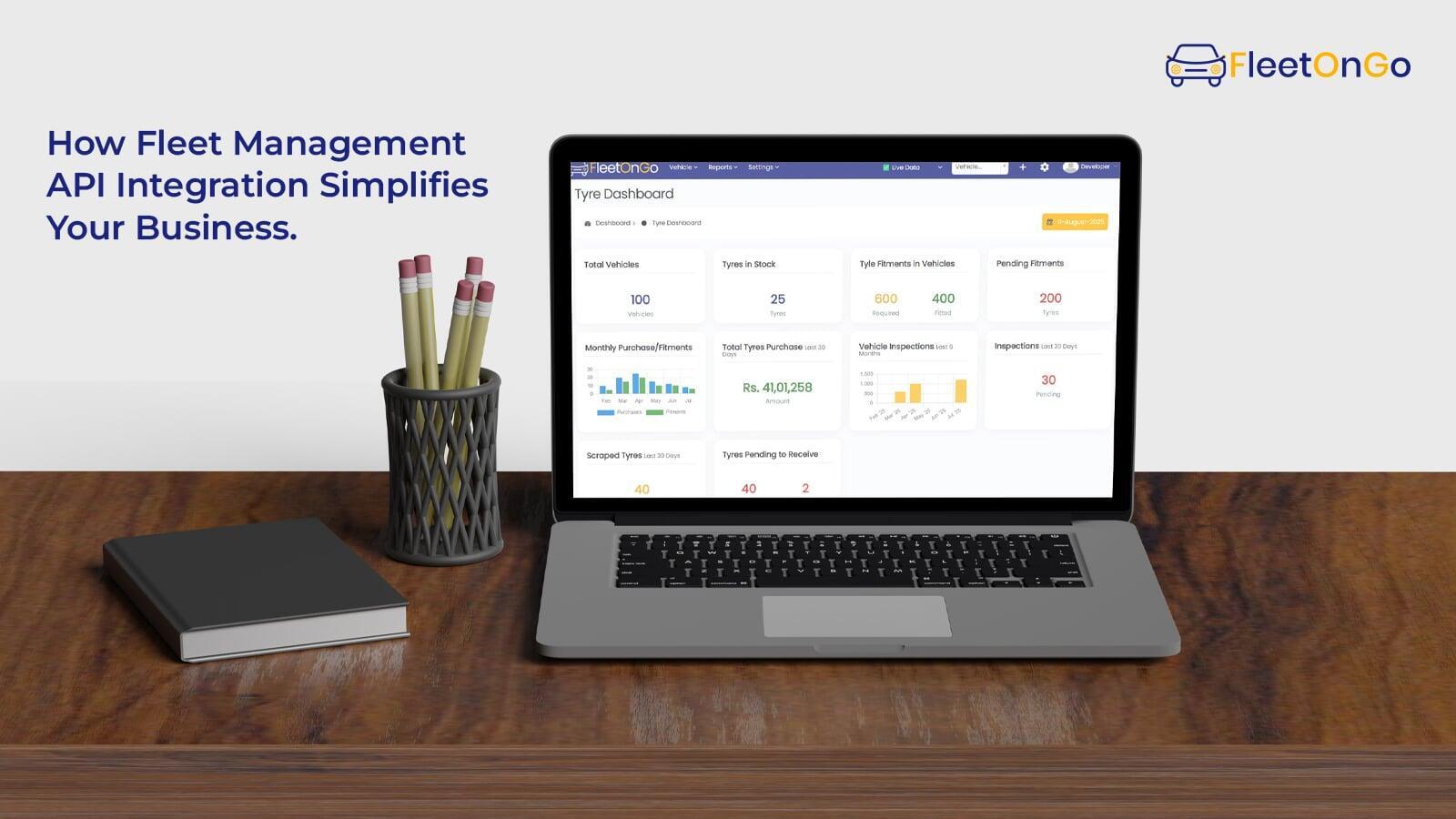
Introduction: Is Your Fleet Data Giving You a Headache?
Do you ever get the feeling like you're drowning in data? Your GPS device tells you something, your fuel card reports tell you something else, and your maintenance schedule is on a whole other spreadsheet. Managing all these systems is a full-time gig in itself!
What would happen if you were able to get all these various apps to communicate with one another? What if they were able to collaborate like a well-oiled crew? That's precisely what fleet management API integration accomplishes. Imagine it as a business universal translator, tying everything together to provide you with one concise, easy-to-read picture of your whole fleet.
This isn't some high-tech gadget upgrade; it's a useful solution to your everyday data hassles. Let's understand how this remarkable tool can super-charge your business.
What is a Fleet Management API? (It’s Simpler Than You Think!)
Let's get the techy term out of the way. An API, or Application Programming Interface, is like a helpful waiter in a restaurant. You (the customer) tell the waiter your order. The waiter then communicates your order to the kitchen (another system) and brings the food back to you. You don’t need to know how the kitchen works; you just get the result you asked for.
A fleet management API works the same way. It’s a messenger that lets your Fleetongo software safely and automatically share information with other tools you use, like your accounting software, fuel card provider, or maintenance scheduler.
This means no more manually typing numbers from one screen to another. The systems do the talking for you!
5 Super-Powered Benefits of Fleet Management API Integration
Embracing fleet management API integration is like giving your business a productivity shot in the arm. Here’s how it helps:
1. One Dashboard to Rule Them All: End the Confusion
Stop switching between ten different tabs! The biggest win of fleet management API integration is creating a single, reliable view of your fleet. You can see vehicle locations, fuel costs, and maintenance alerts all in one place on your Fleetongo dashboard. This means you can make faster, smarter decisions because you have all the facts right in front of you.
2. Automate the Boring Stuff (and Say Goodbye to Mistakes)
Manual data entry is slow and prone to errors. A single typo can cost you money. With API connectivity, you can automate repetitive tasks:
- Maintenance Alerts: Your vehicle’s odometer data can automatically tell your maintenance software when a service is due.
- Instant Reporting: Fuel usage and driver hours can flow directly into your reports, making them accurate and up-to-date.
- Simplified Compliance: Automatically record inspection data and hours-of-service (HOS) to stay compliant without the headache.
3. Save Serious Money on Fuel and Maintenance
This is where fleet management API integration directly boosts your profits. By connecting different data points, you can:
Cut Fuel Costs: Link real-time GPS data with fuel purchases to identify wasteful idling or inefficient routes.
Prevent Costly Breakdowns: Shift from reactive "fix-it-when-it-breaks" to predictive maintenance, fixing small issues before they become big, expensive problems.
4. Keep Your Drivers Happy and Safe
A great driver is the backbone of every successful fleet. Smart API integrations help you empower them with clarity, fairness, and safety.
Accurate Performance Insights:
Track driving behavior, fuel efficiency, and safety metrics in real time. Automated data ensures every scorecard is transparent and trustworthy.
5. Grow Your Business Without the Tech Growing Pains
Your business is growing, and your software should be able to keep up. A solid fleet management API integration strategy is scalable. Whether you add five trucks or fifty, you can easily connect new tools and data sources without starting from scratch. It future-proofs your operations.
Ready to Connect? Your 4-Step Starter Guide
Integrating a fleet management API is not as difficult as it sounds. Simply follow these easy steps:
- Ask "What's My Biggest Pain Point?"
Begin with an aim in mind. Do you need to automate expense reporting? Receive improved maintenance notifications? Lower fuel expenses? Having a purpose in mind makes the process seamless.
2. Select a Platform with Easy Instructions
When choosing a provider, choose one that has great support and good documentation. A good fleet management API should be simple to use and comprehend by your team (or your developer).
3. Always Look to Prioritize Security
Making systems talk is awesome, but safety comes first! Make sure your API provider employs good security practices (such as bank-level encryption) to shield your precious fleet and driver data.
4. Start Small, Think Big
You don't need to integrate everything simultaneously. Pilot with a few units or one integration (such as integrating your fuel cards). This allows you to dip your toes in and demonstrate value before a full deployment.
Conclusion
For today's fleet operators, fleet management API integration is not an option—but a key to remaining efficient, competitive, and profitable. It's about doing smarter, not harder.
By integrating your systems, you transform overwhelming data into powerful insights. You save time and money, and you create a safer, happier workspace for your crew.
Ready to put an end to the data mess? Discover how Fleetongo's robust API can tie your business together.
Start your 14-day free trial of FleetOnGo today - no credit card required!

